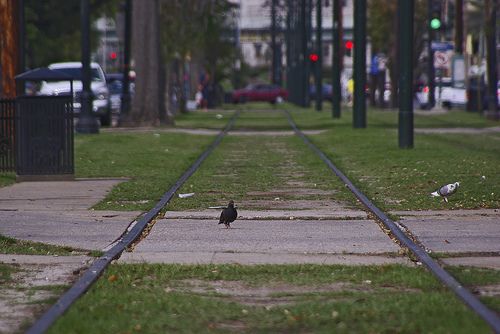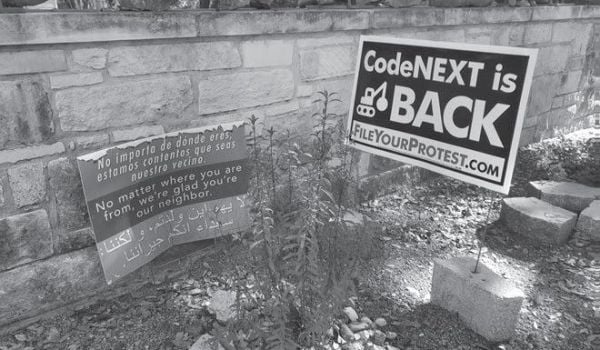In cities across the United States, you can find examples of “streetcar suburbs” — enclaves of mostly single-family homes built between the turn of the century and the 1930s. These are often good-looking, tree-lined places full of heterogeneous character and history, in many ways so different from contemporary suburban sprawl.
One thing most of these these now in-town communities share with more modern suburbs, however, is a full-throated dependence on the private automobile, ironic considering the “streetcar suburb” appellation.
This raises an important question: How did these places transform from transit-needy to car-obsessed? Are the many streetcar lines being planned and built across the country destined to be abandoned once again thanks to low ridership?
It’s worth looking back at the old streetcar suburb model to understand what went wrong.
Unlike many of today’s trolleys, which are being built with the explicit purpose of generating medium-to-high density housing around stations, most streetcar suburbs were from the beginning to be made up principally of single-family or two-family homes. Developers often helped sponsor rail line construction through these neighborhoods to encourage buyers; other times, electric utilities established amusement parks at the end of the corridor to spur ridership.
This approach, however, did not produce high enough users to save private transit systems all over the country from bankruptcy and eventual government takeover. The nation’s overall transit ridership has decreased from about 160 average annual trips per person in 1920 to about 29 annual trips per person in 2000.
That’s partially a result of the vast increase in car use, but also a consequence of the decline in transit service caused first by the replacement of streetcars with buses and then later by the gradual phase-out of many bus operations.
Some have suggested that the switch from transit to cars originates in a conspiracy by General Motors and others to get people to drive cars in their place, but the more depressing reality is probably that most neighborhoods served by streetcars were not dense enough to allow for efficient, frequent service into them over the long-term.
Unlike inner-city districts with their medium and high-rise buildings, streetcar suburbs are characterized by low densities, little neighborhood retail within walking distance, and very few accessible jobs, three significant factors that make them difficult to adapt to transit. In other words, while they may have been built with streetcars in mind, they transitioned to the automobile age naturally.
Commuter rail, operating at much lower frequencies, still plays a role for such older suburbs at the outskirts of large cities, but that transit service is only possible with a very large downtown business district.
Why is the fate of the streetcar suburb so essential to the fate of today’s American cities? Because their difficulties retaining transit service suggests that communities of similar densities will not be able to support frequent, accessible transit service. Are today’s streetcar networks going to suffer a similar fate if they’re built in places with inadequate population?
Aaron Renn argued last week on the Urbanophile that metropolitan areas with populations of less than about two million inhabitants don’t necessitate the kind of high densities urbanists often promote. Citing the example of Columbus, Ohio, Renn suggested that because these regions are small enough in area to make commuting from one end to the other by car possible within a short amount of time, creating dense, walkable neighborhoods focused around a “huge, packed, downtown core” is not absolutely necessary.
In some ways, his argument rings true: for those driving private automobiles, neighborhoods like the former streetcar suburbs may be ideal. For businesspeople hopping from one side of the region to the other (“to lunch”), driving in medium-sized cities works fine.
On the other hand, for everyone else — the young, the old, the poor, the sick — such neighborhoods provide no alternatives. You can’t easily walk to school or to the store or to the senior center when you live in a streetcar suburb. Nor can transit operators provide adequate service, since densities are too low to make frequent buses possible.
The State of Washington considered a law last year that would have mandated up-zoning areas around transit stations to encourage higher densities at rail and bus stops. Though this legislation ultimately failed, its goal was on point: If you’re developing a transit system, you better make the neighborhoods around it adapt to using it. Otherwise, you’ll get a system with low ridership, clearing the way for the eventual dismantlement of the service and a reduction in transportation alternatives for the population.
Ultimately, if you believe in the mobility benefits brought on by public transportation, you have to also believe in increasing densities to support those services. The lesson of the streetcar suburb suggests that not taking that second step could eventually mean the failure of the first.

Yonah Freemark is a senior research associate in the Metropolitan Housing and Communities Policy Center at the Urban Institute, where he is the research director of the Land Use Lab at Urban. His research focuses on the intersection of land use, affordable housing, transportation, and governance.







_600_350_80_s_c1.jpg)








